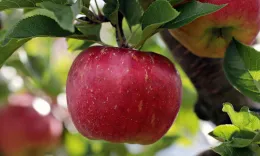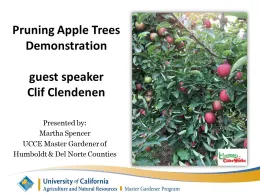Plums, Pluots, and Prunes
Plum trees can be grown almost anywhere in California. They are easy to grow. Most plums require cross pollination. There are two basic kinds of plums: Japanese (Prunus salicina) and European (Prunus domestica). Both require 140-170 days to mature the crop. Most Japanese plums bloom earlier and mature earlier and they require less chilling than the European plums.
Helpful Resources
Standard Japanese Plum Varieties
- Beauty—Early, green skin, amber flesh, heart shaped. Poor keeper.
- Santa Rosa—Early, purple skin, amber flesh. Excellent flavor.
- Shiro—Early, light green-yellow skin, yellow flesh.
- El Dorado—Midseason, purple skin, amber flesh, large oblong.
- Mariposa—Midseason, green-yellow skin, yellow flesh, large heart.
- Wickson—Midseason, green-yellow skin, red flesh, large heart-shaped.
- Friar—Midseason, black skin, amber flesh, very mild flavor. Old variety.
- Kelsey—Midseason, green-yellow skin and flesh.
- Laroda —Midseason, Red-purple skin, yellow flesh.
- Nubiana — Midseason, purple-black skin, yellow flesh, oblong.
- Burgundy—Midseason, red skin and flesh, self-fertile, ripe fruit holds well to tree, good pollinizer.
- Satsuma —Midseason, red skin and flesh, small, round.
- Late Santa Rosa—Midseason, large fruit with purple flesh and tart flavor.
- Howard Miracle (Howard Wonder)—Midseason, large, pink skin, yellow flesh.
- Elephant Heart—Late, purple skin, large, heart-shaped.
- Golden Nectar—Late, large, yellow flesh, tender skin, great flavor.
- Autumn Rosa—Late, large, purple skin, self-fertile.
Plumcots, Plumlike, Aprium
- Plumcot is a 50-50 cross between a plum and an apricot.
- Plumlike is 75-plum and 25 apricot cross.
- Aprium is a 75-apricot 25 plum cross.
- For good pollination plumcots and plumlikes should be planted with other plumcots or plum varieties nearby. Apriums should be planted with other aprium varieties or apricots nearby.
- Plumcots and plumlikes use plum rootstock. Apriums use apricot rootstock.
Apples, Pears, and Quince
Apples

Fortunately, in many areas of California apples are successfully grown. Foggy days and dews can cause cosmetic russetting on the fruit. There are hundreds of apple varieties each with it's own characteristics. Nearly all varieties require cross-pollination from another variety that blooms at the same time and produces abundant, viable pollen. Many varieties are self-fruitful meaning not all of their pollen is viable. Very few actually are self-fruited. For the red-skinned varieties, cool climates are ideal for them to achieve their coloration.
Winter chilling requirements (below 45 degrees F):
- Most varieties: 500-1000 hours
- Low-chill varieties: 300-600 hours

Pruning Apple Trees Demonstration 15 minutes
Resources
- Pruning Fruit Trees (Marin County)
- UC Integrated Pest Management
- UC Davis California Fruit and Nut Research and Information
- UC IPM Website Cultural Care, Pests and Diseases
- Cultural Care for Apple, Pear, Quince Schedule of Care
- Fruits-of-the-Humboldt-Bay-16th-edition A Community Sourced Planting Guide Edited by Sean Armstrong
- For excellent information including variety selection, planting, pruning and caring check out Dave Wilson Wholesale Nursery Website
- L.E. Cook Wholesale Nursery's Recommended Variety List by Sunset Zone (find out your Western Sunset zone here) Humboldt/Del Norte's Zones:
